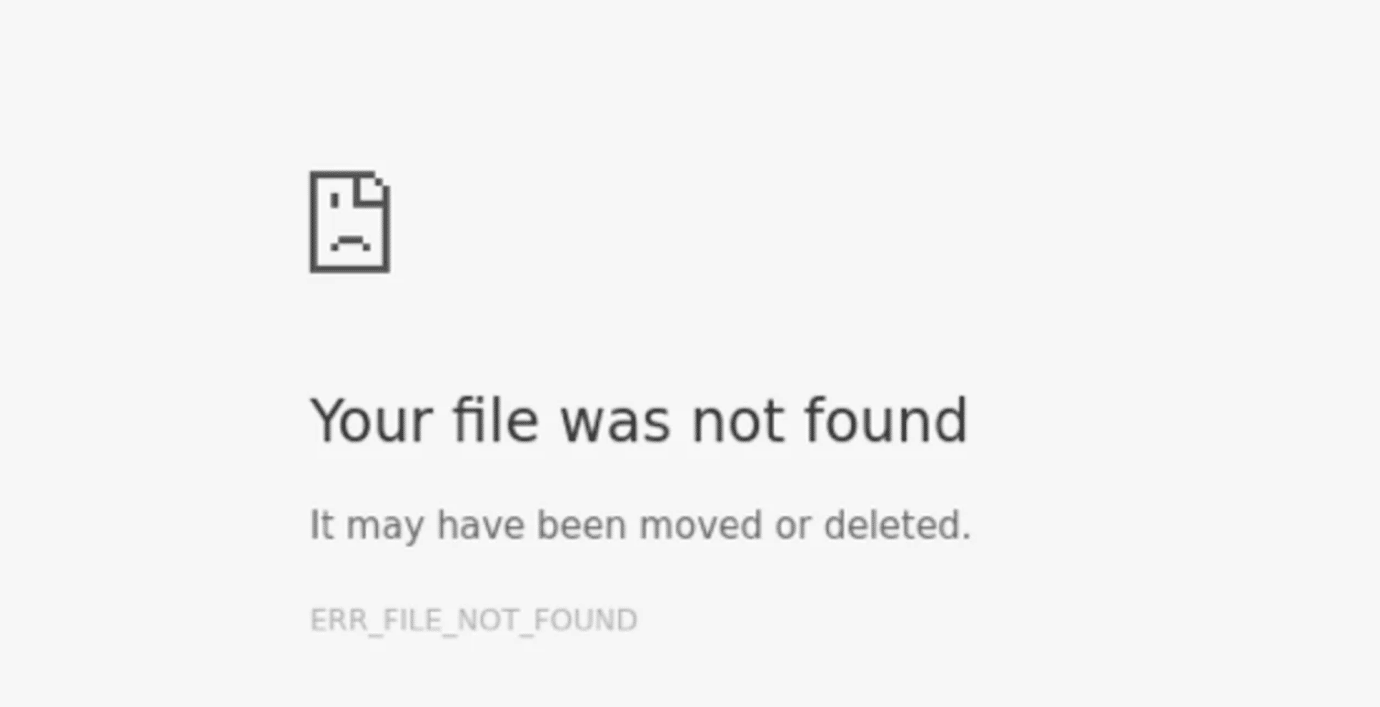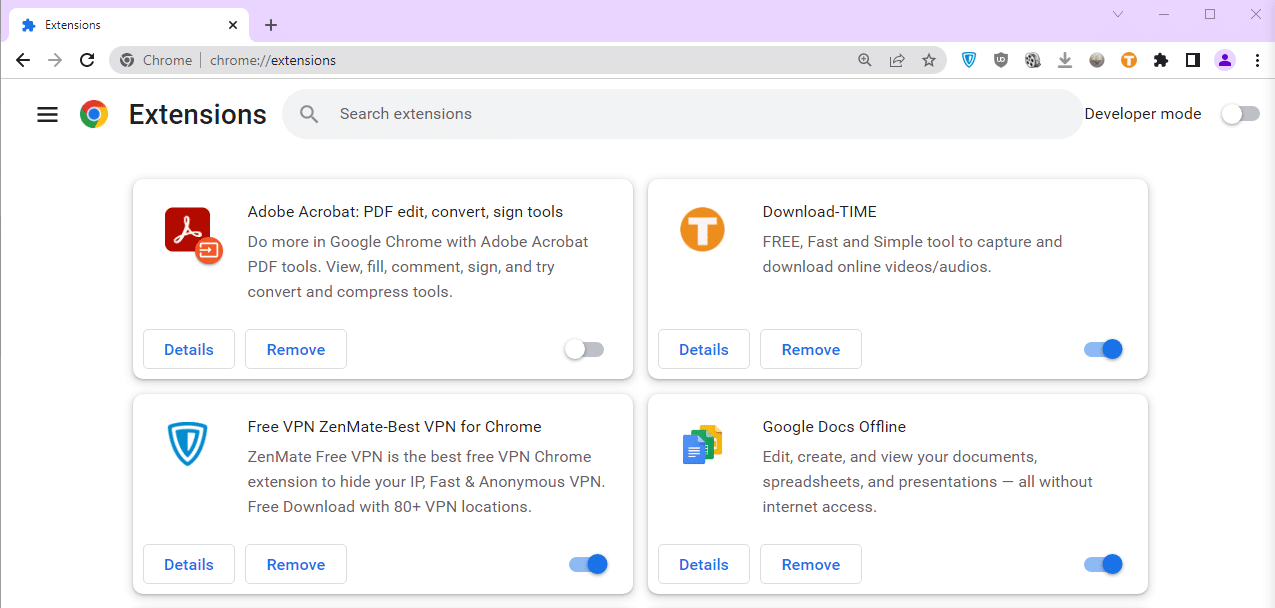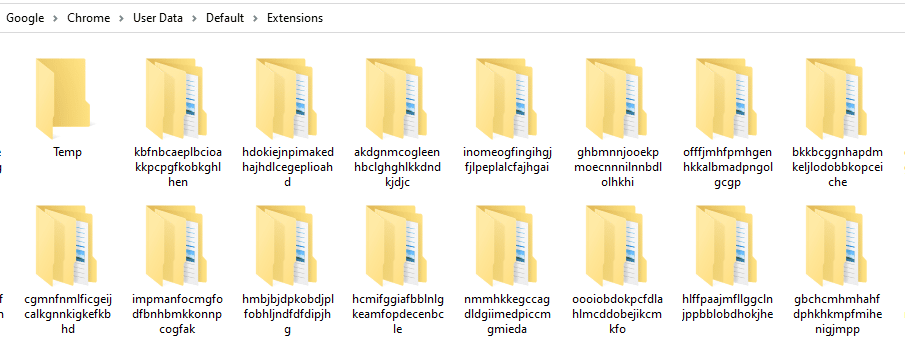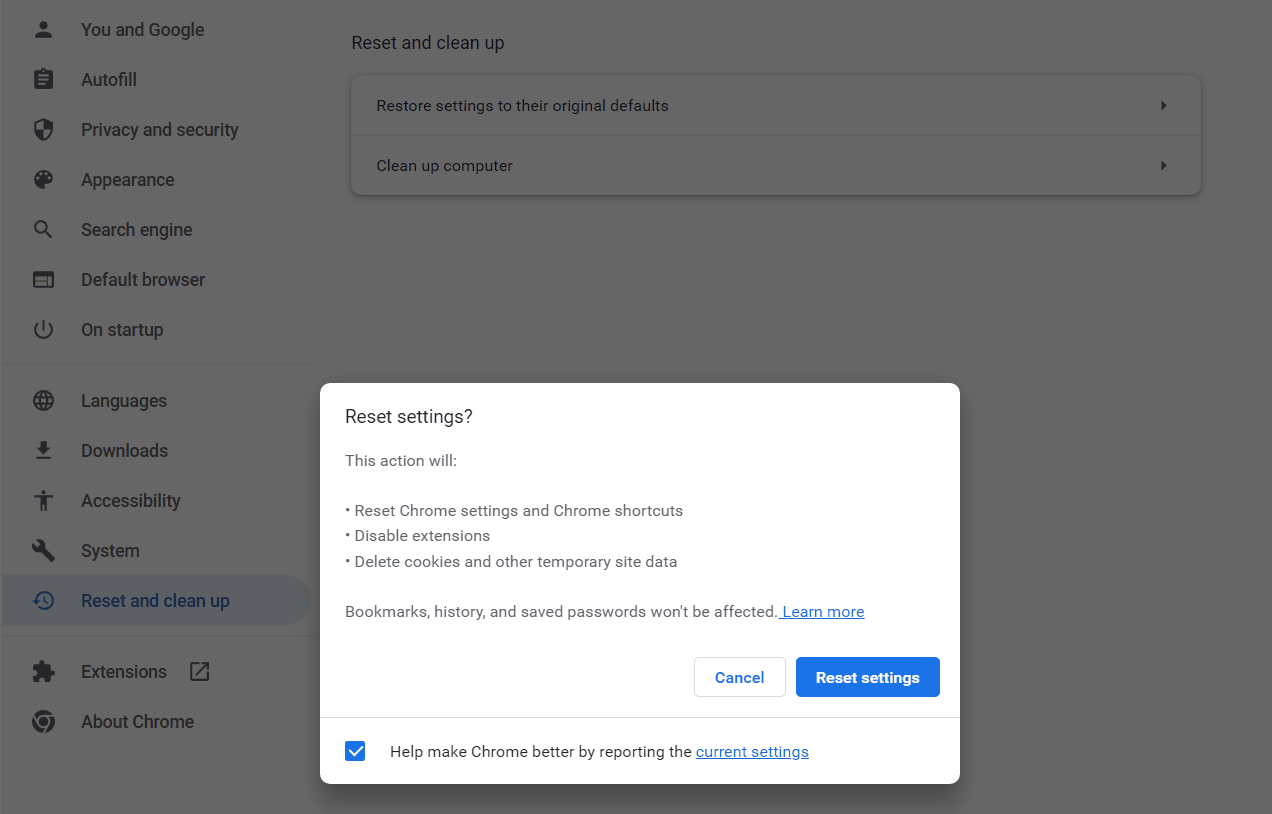The ERR_FILE_NOT_FOUND error is relatively common while using the popular Google Chrome browser. It can happen while you’re working on developing a new extension for the browser or simply while using it to navigate the web. In either case, the error message means you’re running into a resource the browser can’t access.
In many cases, this doesn’t mean that the resource or file isn’t there. If you know how to troubleshoot the ERR_FILE_NOT_FOUND error, you’ll be able to access the file and continue to work on your development project or simply browse the web as usual.
In this article, we’ll talk more about what the ERR_FILE_NOT_FOUND error involves and what causes it. We’ll also show you how to troubleshoot it and discuss similar issues you may run into while using other browsers.
What Does ERR_FILE_NOT_FOUND Mean?
ERR_FILE_NOT_FOUND is an HTTP error message you might run into while browsing the web. In a nutshell, the error means the browser can’t access a specific file or resource, and here’s what it looks like:

As always, your first course of action when you run into an HTTP error should be to read the description your browser provides (and check if the URL is correct).
In this case, Chrome says it’s unable to find a file that may have been deleted or moved. That is to say, you’re trying to access an unavailable resource.
Naturally, you might run into the same issue using another browser besides Chrome. However, the specific wording of this error is unique to the Google Chrome browser.
Moreover, some elements in Chrome can trigger this error even if there’s no issue with the file or directory you’re trying to access. We’ll take a closer look at this in the next section.
What Causes the ERR_FILE_NOT_FOUND Error?
The ERR_FILE_NOT_FOUND error is somewhat unique because it’s commonly caused by problems with Chrome itself and not by your website’s server, despite the message it shows.
The error message indicates the browser cannot locate a specific file because it’s no longer there. However, in our experience, the most common causes behind the ERR_FILE_NOT_FOUND issue are Chrome extensions.
Sometimes, extensions can cause errors with the sites you’re trying to visit. Sometimes, the extensions interact with specific websites unexpectedly, leading Chrome to show errors.
Extensions, just like any other piece of software, can have bugs. Moreover, if you’re using multiple extensions together, it can sometimes result in compatibility issues. Likewise, not updating extensions may lead to errors such as ERR_FILE_NOT_FOUND while using Chrome.
3 Ways to Fix the ERR_FILE_NOT_FOUND Error
Since extensions are the primary culprits behind the ERR_FILE_NOT_FOUND error in Chrome, you’ll need to work with them to fix the problem. Let’s talk about how that process works.
1. Disable Chrome Extensions
For this step of the process, we recommend disabling Chrome extensions one by one. That way, you’ll be able to identify precisely which extension is behind the ERR_FILE_NOT_FOUND error.
To get started, open the settings menu in Chrome by clicking on the three-dot icon in the right corner of the main navigation menu. Go to More Tools > Extensions. Chrome will show you all the extensions available for your profile, including both active and inactive options:

To disable an extension, click on the toggle icon in the lower right corner under its description. You need to repeat this process for each active extension. In this screenshot, the extension is disabled, hence the gray toggle icon:

Go through the active extensions one by one. After disabling each extension, try to access the page returning the ERR_FILE_NOT_FOUND error by force reloading it. You can do this by keeping the page open and using the Control + F5 key combination in Windows.
Force refreshing the page makes Chrome reload it fully without using a cached version. If the error persists, that means the extension you disabled wasn’t the culprit.
Continue disabling extensions until you find one that causes the error to disappear. At this stage, we recommend keeping the extension disabled temporarily and then checking to see if the message persists. If an update to the extension is available, you’ll also want to install it before retrying.
2. Remove Persisting Extensions from the User Data Folder
If you remove a specific Chrome extension, but the error keeps appearing, you’ll need to check if it left some files behind. It’s relatively common for software to store files on your computer even after you uninstall it, so this is a practice you’ll want to get used to.
Chrome stores extension files in the Chrome > User Data > Default > Extensions directory in Windows, under your local user’s AppData folder.
Accessing that directory can be a pain because it’s sometimes hidden. The easiest approach is to open the Windows Run window by hitting the Windows + R keys. Once the window opens, paste the following address into it:
%LOCALAPPDATA%GoogleChromeUser DataDefaultExtensions
This is what the window should look like after you enter that address:

Hit the OK button, and the Chrome extensions folder will open. Here’s what it should look like:

Right off the bat, it’s important to note that you won’t be able to identify extensions by name. Each folder corresponds to an extension, and it’s relatively simple to locate one by opening each folder and looking for the extension icon files or the manifest.json file.
Open the manifest.json file inside each folder and verify the name of the extension it corresponds to at the top of the file:

You’ll need to identify if there’s a folder corresponding to extensions you previously deleted. The easiest way to do this is by accessing the extensions directory right after uninstalling the software and sorting the folders by date of modification.
The last folder to be modified should correspond to the extension you recently uninstalled. If it doesn’t, and you can’t find any corresponding folders, it means the extension left no files behind. If that’s the case and the ERR_FILE_NOT_FOUND persists, you might need to reset Chrome.
3. Reset Chrome
If disabling extensions doesn’t fix the problem, you can use the Chrome reset option to restore the browser to its default settings. This process disables every extension and deletes all temporary data, such as cookies and cached files.
To do this, go to the Chrome Settings menu and select the Reset and clean up option. Now click on Restore settings to their original defaults, and Chrome will ask you to confirm your decision:

Note that resetting Chrome won’t affect your bookmarks and saved passwords. This is merely a troubleshooting tool, and in most cases, the ERR_FILE_NOT_FOUND error should disappear after a full Chrome reset.
Where Else Can the ERR_FILE_NOT_FOUND Error Appear?
Since Chrome typically shows ERR_FILE_NOT_FOUND when it runs into issues with extensions, there’s no counterpart to it in most other browsers. That’s because other browsers may not rely as much on custom add-ons as Chrome does.
You might see this error message in particular locations, including:
- ERR_FILE_NOT_FOUND Android: Google Chrome can’t access the resource on your mobile device, so it’s worth switching to a different browser.
- ERR_FILE_NOT_FOUND Outlook: Typically, you’ll see this error if the browser can’t access a PDF resource within the Outlook interface. We recommend troubleshooting your Chrome extensions.
- ERR_FILE_NOT_FOUND Windows 10: Google Chrome can’t return a resource in Windows 10, meaning you’ll need to follow the extension troubleshooting steps.
- ERR_FILE_NOT_FOUND PDF preview: You’re unable to view a PDF attachment, so keep an eye out for any PDF-related extensions.
- ERR_FILE_NOT_FOUND JavaScript: Your browser can’t load a query when you’re testing an HTML webpage. Make sure that you’ve correctly entered the path for the query.
Although the ERR_FILE_NOT_FOUND message is unique to Google Chrome, this type of error can pop up in any browser (such as Microsoft Edge). The closest equivalent to ERR_FILE_NOT_FOUND in other browsers is a 404 HTTP code.
If you run into issues while using another browser, we have a complete guide on how to troubleshoot the 404 error, as well as the other most common HTTP errors. This information will prove invaluable if you spend a lot of time online.
Can You Prevent This Type of Error With a Good Host?
ERR_FILE_NOT_FOUND is not a server-side error. In most cases, it is caused by issues with your Chrome installation, such as problems with the extensions you use.
That means changing web hosts shouldn’t have an impact on whether you run into the ERR_FILE_NOT_FOUND error or not. Even so, using a managed WordPress hosting provider like Kinsta can help prevent common HTTP errors and other issues native to WordPress.
On top of using a great host, we recommend becoming acquainted with the basics of WordPress troubleshooting. That way, if you run into an error with your website, you’ll be well-equipped to handle it.
Summary
The ERR_FILE_NOT_FOUND is similar to error 404, but it is unique to Google Chrome. Typically, the error is caused by problems with Chrome extensions. That means you need to troubleshoot your Chrome installation to fix it.
To troubleshoot the ERR_FILE_NOT_FOUND error, we recommend starting by disabling your Chrome extensions. Then, it’s worth removing any data left behind by these add-ons. Finally, if all else fails, it’s time to fully reset Chrome to its default settings.
Partnering with a high-quality web host means you’ll have access to customer support and troubleshooting whenever you need it. Check out our Kinsta plans to learn more about the benefits of managed WordPress hosting!


